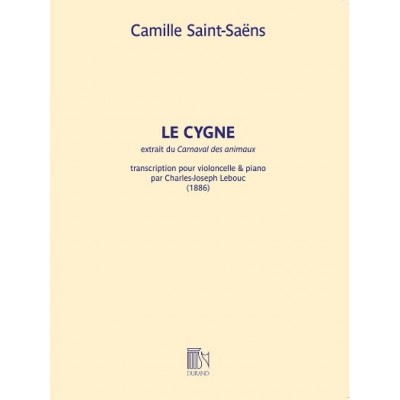Soon after its composition in 1886, Camille Saint-Saëns asked Auguste Durand that Le Carnaval des animaux, which he thought of as a parodic fantasia, should only appear in print posthumously. He probably believed that this entertainment would tarnish the seriousness of the rest of his oeuvre. The Carnaval was therefore published in February 1922, two months after the composer's death. Nevertheless the composer contravened the restrictions he had imposed: in 1886 Charles-Joseph Lebouc obtained the authorization to make and publish a transcription for piano and cello of the penultimate piece in this musical bestiary: no.13, Le Cygne . This arrangement, which became a bravura piece for cello, was an immense success each listener compelled to imagine a majestic swan gliding across a lake , a success which Saint-Saëns was obliged to accept. / Violoncelle / Durand
EUR 8.40 - See more - Buy online
 (EUROPEAN COMPANY)
(EUROPEAN COMPANY) 